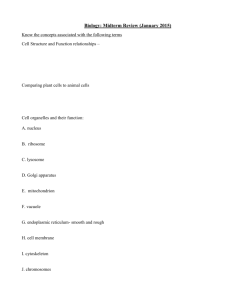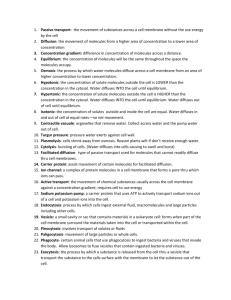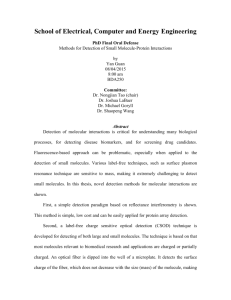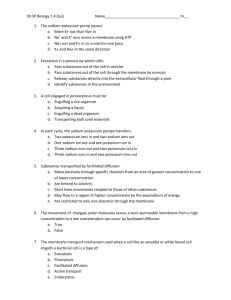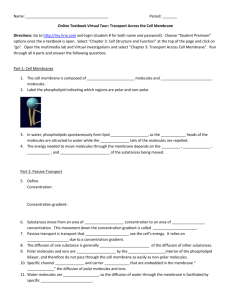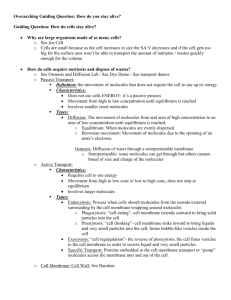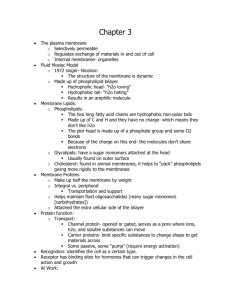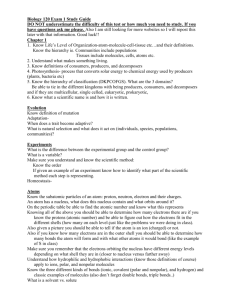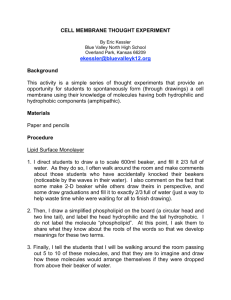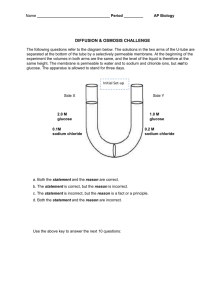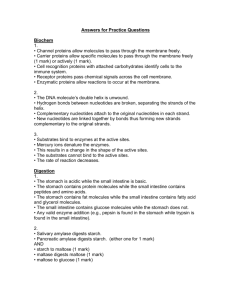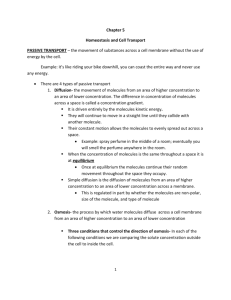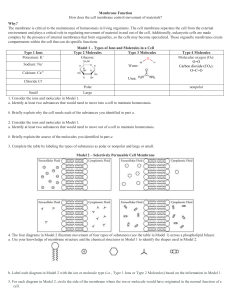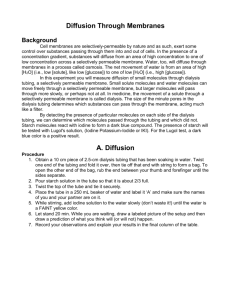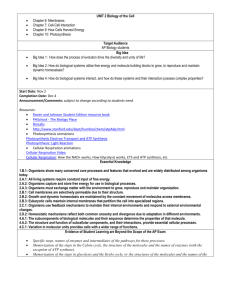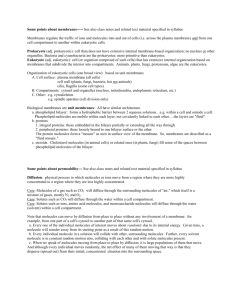CHAPTER 3-CELLS: THE LIVING UNITS
advertisement
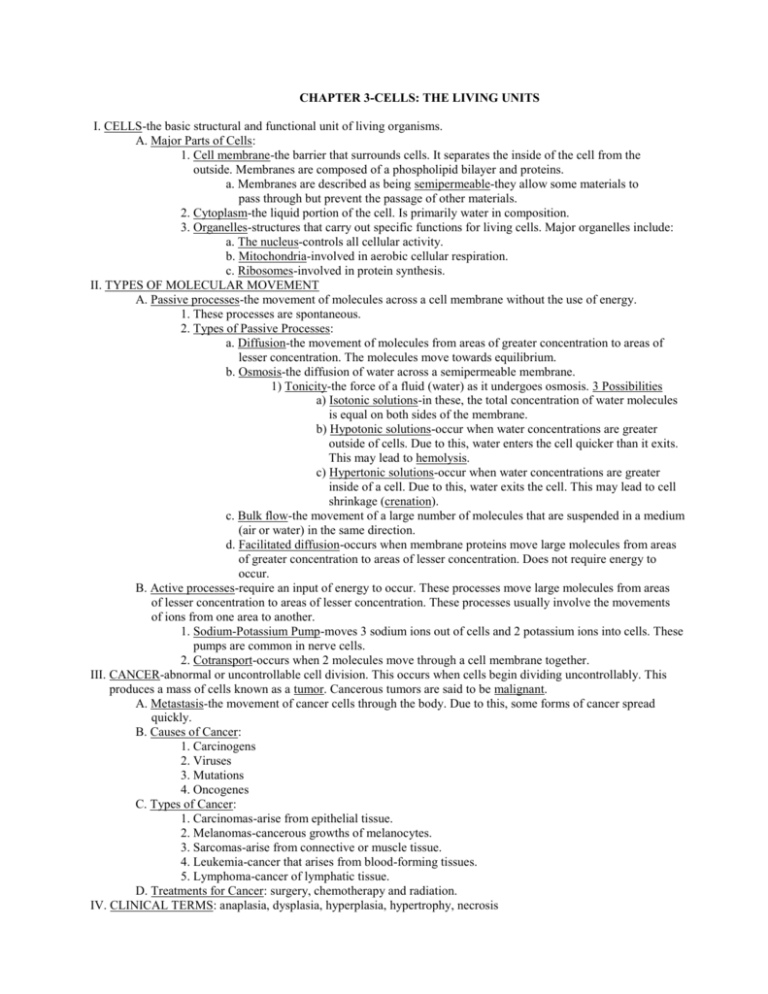
CHAPTER 3-CELLS: THE LIVING UNITS I. CELLS-the basic structural and functional unit of living organisms. A. Major Parts of Cells: 1. Cell membrane-the barrier that surrounds cells. It separates the inside of the cell from the outside. Membranes are composed of a phospholipid bilayer and proteins. a. Membranes are described as being semipermeable-they allow some materials to pass through but prevent the passage of other materials. 2. Cytoplasm-the liquid portion of the cell. Is primarily water in composition. 3. Organelles-structures that carry out specific functions for living cells. Major organelles include: a. The nucleus-controls all cellular activity. b. Mitochondria-involved in aerobic cellular respiration. c. Ribosomes-involved in protein synthesis. II. TYPES OF MOLECULAR MOVEMENT A. Passive processes-the movement of molecules across a cell membrane without the use of energy. 1. These processes are spontaneous. 2. Types of Passive Processes: a. Diffusion-the movement of molecules from areas of greater concentration to areas of lesser concentration. The molecules move towards equilibrium. b. Osmosis-the diffusion of water across a semipermeable membrane. 1) Tonicity-the force of a fluid (water) as it undergoes osmosis. 3 Possibilities a) Isotonic solutions-in these, the total concentration of water molecules is equal on both sides of the membrane. b) Hypotonic solutions-occur when water concentrations are greater outside of cells. Due to this, water enters the cell quicker than it exits. This may lead to hemolysis. c) Hypertonic solutions-occur when water concentrations are greater inside of a cell. Due to this, water exits the cell. This may lead to cell shrinkage (crenation). c. Bulk flow-the movement of a large number of molecules that are suspended in a medium (air or water) in the same direction. d. Facilitated diffusion-occurs when membrane proteins move large molecules from areas of greater concentration to areas of lesser concentration. Does not require energy to occur. B. Active processes-require an input of energy to occur. These processes move large molecules from areas of lesser concentration to areas of lesser concentration. These processes usually involve the movements of ions from one area to another. 1. Sodium-Potassium Pump-moves 3 sodium ions out of cells and 2 potassium ions into cells. These pumps are common in nerve cells. 2. Cotransport-occurs when 2 molecules move through a cell membrane together. III. CANCER-abnormal or uncontrollable cell division. This occurs when cells begin dividing uncontrollably. This produces a mass of cells known as a tumor. Cancerous tumors are said to be malignant. A. Metastasis-the movement of cancer cells through the body. Due to this, some forms of cancer spread quickly. B. Causes of Cancer: 1. Carcinogens 2. Viruses 3. Mutations 4. Oncogenes C. Types of Cancer: 1. Carcinomas-arise from epithelial tissue. 2. Melanomas-cancerous growths of melanocytes. 3. Sarcomas-arise from connective or muscle tissue. 4. Leukemia-cancer that arises from blood-forming tissues. 5. Lymphoma-cancer of lymphatic tissue. D. Treatments for Cancer: surgery, chemotherapy and radiation. IV. CLINICAL TERMS: anaplasia, dysplasia, hyperplasia, hypertrophy, necrosis

